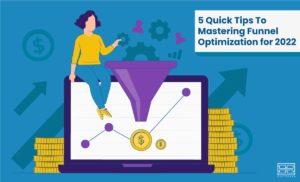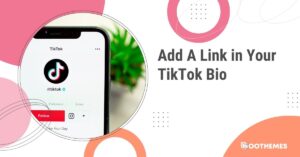Influencer partnerships can be THE most effective way to increase brand awareness by leveraging the reach and credibility of individual creators who have a large following and are considered experts or thought leaders in their industry or niche in speaking t crowds or creating content that speaks very well.
You must be aware of the social media platforms and the ones that are the closest to your product and service. If your audience is not typically hanging out on a given social media do not invest in it and move on to the next platform and its influencers for partnership.
And if you are looking for an easy way to find and collaborate with influencers, go for an influencer marketplace such as Ainfluencer.
Ainfluencer is totally free and very easy to use. And it can be a perfect option to start using social media for your marketing strategies.
How does an influencer partnership work?
Influencer partnership is a form of influencer marketing in which brands work with individuals who have a significant following on social media platforms such as Instagram, YouTube, TikTok, Twitter, and Facebook. These influencers, also known as “content creators,” use their channel to promote the brand’s products or services to their audience.
The process usually starts with the brand identifying relevant influencers in their niche and reaching out to them to propose an influencer partnership proposal. The influencer may then create sponsored content, such as a post or video, featuring the brand’s products or services. This content is then shared with the influencer’s followers, exposing the brand to a new audience.
Influencer marketing such as TikTok Influencer marketing can be used to reach a specific target audience, increase brand awareness, and drive sales. The success of an influencer marketing campaign can be measured by metrics such as engagement rate, reach, and conversions.
Top 20 major social media and their pros and cons
- Instagram:
- Pros – Instagram influencers have the largest user base, high engagement rates,
- Cons – algorithm changes can impact reach
- YouTube:
- Pros – high engagement and reach,
- Cons – high competition and strict guidelines
- TikTok:
- Pros – TikTok Influencers: fast-growing user base, high engagement,
- Cons – less mature ad platform
- Facebook:
- Pros – large user base, targeted advertising options,
- Cons – algorithm changes can impact reach
- Twitter:
- Pros – real-time engagement,
- Cons – lower engagement compared to other platforms
- Pinterest:
- Pros – high engagement for certain industries (e.g. fashion, home decor),
- Cons – less popular for certain industries (e.g. technology)
- LinkedIn:
- Pros – B2B focus, high engagement for certain industries (e.g. finance, professional services),
- Cons – less popular for certain industries (e.g. fashion)
- Snapchat:
- Pros – high engagement,
- Cons – smaller user base compared to other platforms
- Twitch:
- Pros – high engagement for gaming and esports,
- Cons – less popular for other industries
- Weibo:
- Pros – large user base in China,
- Cons – limited reach outside of China
- WeChat:
- Pros – large user base in China,
- Cons – limited reach outside of China
- Vimeo:
- Pros – high engagement for creative content,
- Cons – smaller user base compared to other platforms
- Dailymotion:
- Pros – high engagement for video content,
- Cons – smaller user base compared to other platforms
- Flickr:
- Pros – high engagement for photography,
- Cons – smaller user base compared to other platforms
- Periscope:
- Pros – real-time engagement,
- Cons – smaller user base compared to other platforms
- Medium:
- Pros – high engagement for long-form content,
- Cons – smaller user base compared to other platforms
- Soundcloud:
- Pros – high engagement for music,
- Cons – smaller user base compared to other platforms
- MySpace:
- Pros – high engagement for music,
- Cons – smaller user base compared to other platforms
- Meetup:
- Pros – high engagement for local events,
- Cons – smaller user base compared to other platforms
- IMDb:
- Pros – high engagement for movie and TV content,
- Cons – smaller user base compared to other platforms
Note: It is important to note that these are general pros and cons and may vary depending on the specific industry or use case.
Top 10 methods to utilize influencer marketing
Now that we know what social media we should focus on to raise brand awareness on, let’s dive deep into a few ways to leverage influencer partnerships for brand awareness:
- Identify the right influencers
Identify influencers who align with your brand and have a following that is relevant to your target audience.
- Build relationships
Reach out to influencers on free end-to-end marketplaces such as Ainfluencer and build relationships with them. This can be done through any influencer marketplace, directly and inefficiently on major social media, email, or in-person meetings.
- Collaborate on content
Collaborate with influencers on content such as Reels, TikToks, blog posts, videos, and all other types of social media posts. This helps you in building the most powerful content as well as getting eyeballs on the content at the same time.
- Offer incentives
Offer incentives such as discounts or exclusive access to new products or services to influencers who promote your brand and their followers. Let them push your products with their own day-to-day language and style to have the highest impact.
- Leverage micro-influencers
Micro-influencers are individuals with a smaller but highly engaged following, leveraging them can provide a cost-effective way to increase brand awareness and credibility.
- Track and measure results
Use tools such as Google Analytics, to track the performance of your influencer marketing campaigns and measure the impact on brand awareness.
- Use Influencer generated content
Use influencer-generated content such as reviews, testimonials, or videos to promote your brand and increase brand awareness. There are influencer marketing platforms that allow you to directly order content to be created by influencers for your product at scale.
- Be authentic
Be authentic in your approach to influencer marketing, and make sure that the influencers you work with align with your brand’s values and messaging. If Instagram influencers such as music influencers or Instagram female models fit with your brand contact them. If your business is better matched with TikTok influencers then focus on TikTok.
- Host events
Host events such as product launches or pop-up shops and invite influencers to attend. This can help increase brand awareness by getting your brand in front of a large and engaged audience.
- Run an influencer contest
Run a contest where influencers can participate and promote your brand to their followers.
What are the benefits of influencer marketing?
- Increased brand awareness: Partnering with influencers can expose a brand to a new and engaged audience, increasing brand awareness and familiarity.
- Credibility and trust: Influencers have built trust with their followers, and their endorsement can lend credibility to a brand.
- Targeted reach: Influencer marketing allows brands to reach a specific target audience, as influencers typically have a niche following.
- Greater engagement: Influencer-generated content tends to have higher engagement rates than brand-generated content, as their followers trust and relate to the influencer.
- Cost-effectiveness: Influencer marketing can be a cost-effective way to reach a large audience, as it often requires a smaller budget than traditional advertising methods.
- Increased conversions: Influencer marketing can drive sales and lead to an increase in conversions by reaching a highly engaged audience and leveraging the influencer’s reputation.
- Authenticity: Influencer marketing is seen as more authentic than traditional advertising because it comes from a relatable person and not a brand, making it more effective in building trust and connection with its audience.
Top influencer marketing platforms
There are several influencer marketing platforms that brands and businesses can use for influencer marketing. Some popular options include:
1- Ainfluencer
Ainfluencer is a marketplace for businesses to find and collaborate with influencers on social media platforms such as Instagram. This marketplace allows businesses to search for influencers based on criteria such as niche, location, language, gender, etc.
Brands simply create a campaign brief and publish it into the marketplace to receive 1000s of inbound offers by influencers. Ainfluencer AI helps match you with the most relevant influencers for your business in a very fast and smart way. Ainfluencer.com is one of the best, safest, and free influencer marketplaces in the market without asking businesses to spend a penny on the platform during their full experience forever. It does a perfect job of connecting brands with influencers allowing them to leverage the reach and credibility of creators in creating selling content and promoting their products and services to a wider audience.
2- AspireIQ
A Saas platform that helps brands find and collaborate with influencers on Instagram, YouTube, and TikTok.
A platform that offers influencer search, campaign management, and analytics tools.
Related Resource: Upfluence review: Is It really worth your investment?
3- Klear
A platform that provides tools for finding, managing, and measuring influencer marketing campaigns on various social media platforms.
Further Reading: Klear Review 2022: Is It An Effective Influencer Marketing Tool?
4- Influence.co
A platform that connects brands with influencers on Instagram, TikTok, YouTube, and Twitch.
5- Traackr
A platform that offers influencer discovery, relationship management, and performance measurement tools.
6- Trendkite
A platform that provides influencer marketing software and analytics tools to help brands identify, engage, and measure the impact of influencer campaigns.
7- InfluencerDB
A platform that offers tools for identifying, researching, and managing influencer relationships on Instagram, YouTube, and TikTok.
8- Hootsuite Insights
A platform that offers influencer research and relationship management tools as well as analytics.
9- Neoreach
A platform that provides influencer search, campaign management, and analytics tools.
10- Hypetap
A platform that helps brands find and collaborate with influencers on Instagram, TikTok, YouTube, and Twitch.
It is important to note that the best software for a business will depend on the specific needs, budget, and social media platforms they are targeting. Some brands may also choose to use multiple software platforms to manage their influencer marketing campaigns.
Most frequently asked questions by brands regarding Influencer marketing:
How can I find the right influencers for my brand?
Finding the right influencers for your brand can be a crucial step in the success of your influencer marketing campaign. Here are some steps to help you find the right influencers for your brand:
- Define your target audience: Clearly define your target audience, including demographics, interests, and behaviors. This will help you narrow down the search for influencers who align with your target audience.
- Use influencer marketing platforms: There are several influencer marketing platforms available that allow you to search for influencers by niche, audience size, and engagement rate. Some popular platforms include Upfluence, AspireIQ, and Influencer.co.
- Search on social media: You can also search for influencers on social media platforms such as Instagram, Twitter, and YouTube by using relevant hashtags and keywords to find influencers in your niche.
- Evaluate their content: Once you have a list of potential influencers, evaluate their content to ensure that it aligns with your brand’s values and messaging.
- Look at their engagement rate: Check the influencer’s engagement rate, which is the ratio of likes, comments, and shares to their total number of followers. A high engagement rate is an indication of an engaged and responsive audience.
- Check for authenticity: It is important to also check for authenticity of the influencer and their followers. Avoid influencers who use bot or fake followers to artificially inflate their numbers.
- Personal chemistry: It is also important to take into account the personal chemistry with the influencer, as a good relationship with them can lead to more successful campaigns.
How do I measure the ROI of my influencer marketing campaigns?
To measure the return on investment (ROI) of your influencer marketing campaigns, you can track the following metrics:
- Impressions: The number of times your content was viewed by the influencer’s audience.
- Engagement: The number of likes, comments, and shares on the influencer’s post.
- Traffic: The number of clicks on the link in the influencer’s post that leads to your website.
- Sales: The number of conversions or sales that can be attributed to the influencer’s post.
- Cost per acquisition (CPA): The cost of the campaign divided by the number of conversions.
You can also use tools like Google Analytics to track the performance of your influencer marketing campaigns. By analyzing these metrics, you can determine the effectiveness of your campaigns and make adjustments as necessary.
It’s important to note that influencer marketing campaigns are hard to measure due to the lack of transparency and third-party measurement. It’s good to set up a clear plan with the influencer on what you expect from the campaign, and how you will measure the success.
How much should I pay influencers?
The amount that you should pay influencers can vary widely depending on a number of factors, such as their reach, engagement, and niche.
Typically, influencers with larger followings and higher engagement rates will command higher fees. For example, a micro-influencer with 10,000 followers may charge $10 per post, while a macro-influencer with 1 million followers may charge $10,000 per post.
It’s also important to consider the influencer’s niche and the relevance of their audience to your brand. For example, an influencer in the beauty niche may be able to command a higher fee for a post about skincare products than an influencer in a different niche.
However, Keep in mind that paying influencers based on their number of followers can be a mistake. An influencer’s engagement rate and their niche should also be considered. The engagement rate is the percentage of an influencer’s followers who interact with their posts. An influencer with a high engagement rate is more likely to drive conversions than an influencer with a high number of followers but low engagement.
It’s also important to note that influencer marketing campaigns are hard to measure, and it’s hard to put a price on the value they bring to your brand. So, it’s good to have a clear plan with the influencer on what you expect from the campaign and have a clear agreement on the compensation.
What are the legal considerations for influencer marketing?
It is important to be aware of the legal considerations involved. Here are a few key things to keep in mind:
- Disclosure: Influencers are legally required to disclose any sponsored content or collaborations with brands. This means that they must clearly indicate when a post is sponsored or includes affiliate links. Failure to disclose can result in hefty fines from the FTC.
- Intellectual property rights: Make sure that you have the rights to use any content created by the influencer, such as photos and videos, before it’s used in marketing campaigns.
- Endorsement guidelines: The FTC has guidelines in place regarding endorsements and testimonials, which influencers must follow. This includes not making false or misleading claims about a product or service.
- Data protection: If you’re collecting personal data from your influencer’s followers, you’ll need to comply with data protection laws such as GDPR.
- Competition laws: Be aware of any competition laws in your jurisdiction and ensure that your influencer marketing campaigns do not breach them.
- Contracts: It’s important to have a written agreement in place with your influencer outlining the terms of the partnership, including compensation, rights to the content created, and any specific requirements.
It’s always recommended to consult with a legal expert or attorney familiar with influencer marketing and advertising laws before launching a campaign.
How can I make my influencer marketing campaign more effective?
There are several ways to make your influencer marketing campaign more effective, such as:
- Identify the right influencers: Choose influencers whose audience aligns with your target market and whose values align with your brand. It’s important to consider influencer’s niche and relevance of their audience to your brand.
- Set clear goals and objectives: Define what you want to achieve with your influencer marketing campaign, and set clear goals and objectives. This will help you measure the success of your campaign and make adjustments as necessary.
- Create authentic partnerships: Instead of paying influencers to post a single sponsored post, consider building a longer-term partnership with them. This can include ongoing collaborations, exclusive content, and behind-the-scenes access.
- Measure and analyze your results: Use metrics such as impressions, engagement, and conversions to measure the success of your campaign. Use the data to adjust your strategy and improve your future campaigns.
- Engage your audience: Encourage your audience to engage with the influencer’s content by including calls-to-action and offering incentives.
- Be transparent: Be transparent with your audience about your partnerships with influencers. This will help build trust and credibility with your audience.
- Be creative: Be creative with your campaign and think outside the box. You can use influencers to create unique and engaging content, such as videos, live streams, or giveaways.
It’s important to remember that influencer marketing is not a one-time thing, it’s ongoing and it should be a part of a larger holistic marketing strategy. Also, it’s important to have clear agreements with the influencers on the scope of the partnership, the expectations, and how you will measure the success.
How do I integrate influencer marketing with other marketing channels?
There are several ways to integrate influencer marketing with other marketing channels, such as:
- Social media: Use influencer-generated content in your own social media campaigns. This can include reposting influencer content on your own accounts, creating social media ad campaigns that feature influencer content, or using influencer-generated content in your social media stories.
- Email marketing: Include influencer content in your email campaigns. This can include featuring influencer reviews or testimonials in your emails, or including influencer-generated content in your email newsletter.
- Content marketing: Use influencer content in your blog or website. For example, you can feature influencer-generated content on your website or in your blog posts.
- Public Relations: Influencer marketing can be used to support your PR campaigns. Influencer campaigns can be used to generate buzz and coverage for your brand, product, or service.
- Event Marketing: Influencers can be invited to attend your events, or you can use their content to support your event marketing.
It’s also important to coordinate your messaging across all marketing channels to ensure that your influencer campaigns are aligned with your overall marketing strategy. It’s important to also have a clear plan with the influencer on how the content they are creating will be used in other marketing channels.
How can I avoid fake influencers and fraud?
Here are a few tips to help you avoid fake influencers and fraud:
- Check their follower count: A high follower count doesn’t necessarily indicate that an influencer is genuine, but a low count could be a red flag.
- Look at their engagement rate: A genuine influencer should have a high engagement rate, meaning that a large percentage of their followers are interacting with their posts.
- Check their content: Look at the influencer’s past posts and see if they look authentic and consistent.
- Research the influencer: Look for articles or other information about the influencer online to see if there are any red flags or warning signs about their authenticity.
- Keep an eye for any suspicious activity, such as buying followers or likes, which can be a sign of fraud.
- Use tools and platforms that verify the authenticity of influencers, such as Hootsuite Insights, BuzzSumo, Upfluence, etc.
How do I handle influencer contract negotiations?
Handling influencer contract negotiations can be a bit tricky, but with the right approach, you can ensure that both you and the influencer are happy with the terms of the agreement. Here are a few tips to help you navigate the process:
- Clearly define your goals and objectives: Before you start negotiating, make sure you know exactly what you want to achieve with the influencer partnership. This will help you identify which terms are most important to you and what you’re willing to compromise on.
- Be upfront about your budget: Influencers often have a good sense of their own worth, so being upfront about your budget can help you avoid any misunderstandings later on.
- Be flexible: Influencer marketing is a fast-paced and constantly evolving industry, so it’s important to be open to new ideas and approaches. Be prepared to adapt your strategy as needed.
- Be clear and specific about your expectations: Make sure that both you and the influencer understand what is expected from the partnership, such as the deliverables, timelines and metrics for success.
- Have a legal expert review the contract: Make sure that your contract is legally binding and covers all the necessary points and have a legal expert review it, before finalizing it.
- Don’t be afraid to walk away: If the terms of the agreement aren’t right for you, don’t be afraid to walk away. There are many influencers out there, and you’ll eventually find one that’s a good fit for your brand.









![Read more about the article Elementor Popup Builder: An Overview [+Top 5 Features]](https://www.hoothemes.com/wp-content/uploads/2022/06/Elementor-Popup-Builder-An-Overview-Top-5-Features-300x157.png)